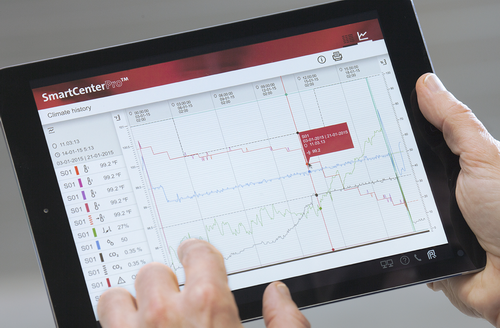



Guidelines to Correct Incubation Programs
GLOBAL - Any incubation program, even when it’s successful, is never final. Sooner or later, it will have to be adapted according to changes resulting from climate, breed, egg quality, technical upgrades of setters and hatchers and numerous other factors.
The need to adapt will be signaled by results in terms of hatchability and chick quality. The routine monitoring of eggshell temperature, yield and egg weight loss, for example, can provide an early warning that changes are needed.
Each hatchery operates in its specific, unique situation - and its incubation programs must also be specific, to correspond with local conditions. Adopting an incubation program that is successful for another hatchery, even one that operates in similar conditions to your own, is usually not the best option.
Before adjusting a program, it is therefore useful to answer a range of questions:
Do the incubators respond accurately to programmed set points? If not, they may simply need some maintenance or a re-calibration of sensors.
- If the problem is incidental or evident in only some of the machines, the solution is likely to be found by reviewing the maintenance of those affected.
- Can the source of the problem be established? For example, if the problem is retarded embryo development or early mortality, it may be related to the setter, or if there is increased mortality in fully developed embryos, it is likely to be the hatcher.
- Is the problem affecting all the eggs, or only certain batches? The current status of the breeder flocks may require investigation.
In short, it is important to establish why a program needs to be changed - and where the problem has arisen.
An incubation program is a complex construction: the expression of a strategy that leads to the optimum development of embryos, where every element of the program is combined and mutually influences the other. Generally, incubation programs (strategies) aim to an apparently simple task:
- Maintain the eggs at a stable temperature of 100.0°F in incubation, gradually increasing to not higher than 101.0°F in the last days,
- Allow egg weight loss of 11-13%,
- Guarantee the correct concentration of oxygen in the air and,
- Turn the eggs regularly.
The aim is to achieve all this with minimal heating, cooling and humidification for energy-efficiency - and what appear to be small changes: changing temperature set point by 0.5°F or RH by 2-3%, can make a big difference to results. Opening ventilation a small increment further will refresh the air, but it will also decrease humidity, increase the cooling effect and force the machine to restore set points.
The questions ‘what change has been made?, ‘when?’ and ‘for how long? can transform a simple task into a complex issue. An existing program that was, until recently, delivering ‘acceptable’ results should form the skeleton of a new program, making one change at a time to assess its impact and evolve rather than revolutionize incubation programming.
Advice:
- Ensure that setters and hatchers are really working to set points accurately before making changes
- Follow a strict and regular maintenance routine
- Avoid unrealistic set points that are beyond the capabilities of your technology
- Make changes to incubation parameters one at a time, to monitor its effect
- Test and repeat each new program 2-3 times on selected machines before applying generally
- Keep accurate records to monitor and evaluate results
- Observe the effects of changes carefully: consider naming new programs to reflect those changes.









